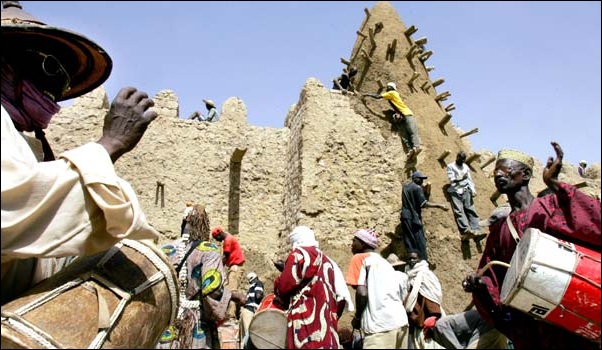[ by Charles Cameron — Kosovo I know little about, Timbuktu I’ve heard praised, Bamiyan I’ve visited ]
.
Before the conflict, the synagogue held thousands of religious and cultural treasures, including hundreds-years-old Torah scrolls, historical texts, precious dining ware, and ancient Judaica of all sorts. Some of the items were reportedly looted in the early days of the war. Some were reportedly placed in safekeeping. Many remained in the building until its destruction.
Two large Buddhas were intentionally destroyed with artillery fire and explosives by members of the Taliban militia on March 11-12, 2001.
The UN cultural body Unesco watched in horror on Saturday as Mali extremists ravaged shrines in the fabled city of Timbuktu which it had listed as endangered sites just days before.
The ongoing de-Christianization of Kosovo continues and unlike the past frenzy of the anti-Serbian mass media in the West, we mainly have a deadly silence about the reality of Kosovo and the continuing Albanianization of this land. However, how is it “just” and “moral” to persecute minorities and to alienate them from mainstream society; and then to illegally recognize this land without the full consensus of the international community?
“There is no authority here. Syria was one of the jewels of the crown of the Middle East,” Landis says. “The most beautiful Crusader castle, Krak des Chevaliers, undisturbed, has been bombed by both sides because rebels took up and made it a stronghold. The government bombed it. It makes you want to cry, but I guess that’s the price of war.”
**
No religious animosity is necessary for destruction.
Vandals have destroyed prehistoric rock art in lawless southern Libya, endangering a sprawling tableau of paintings and carvings classified by UNESCO as of “outstanding universal value”.








